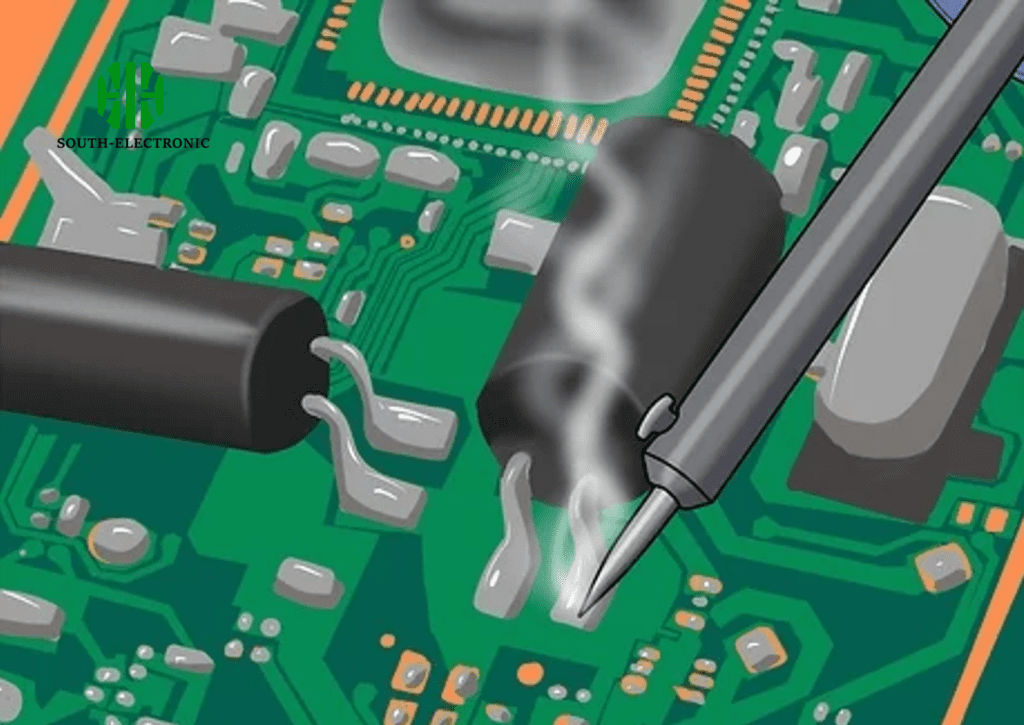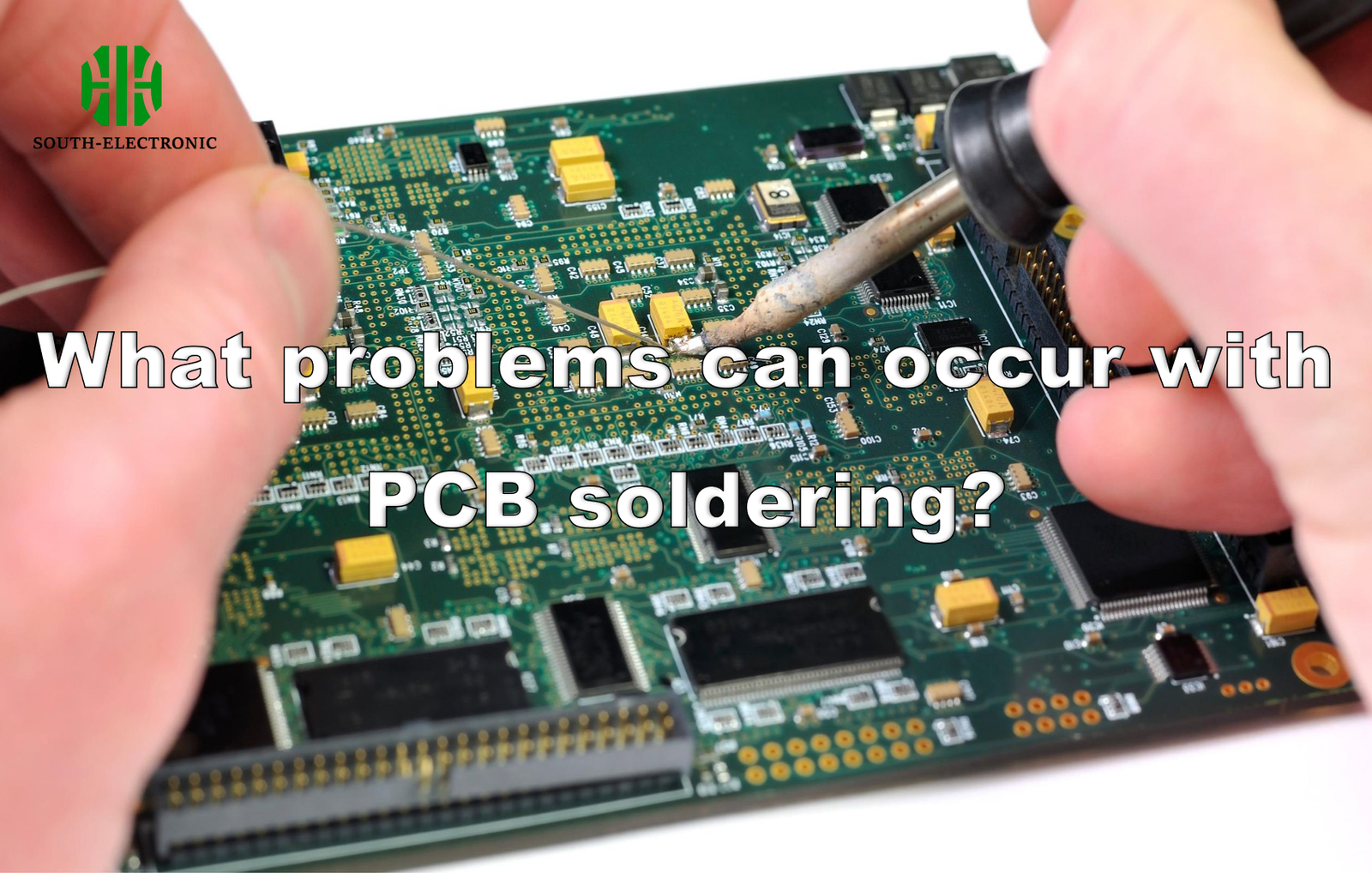PCB soldering is the process of connecting electronic components to a PCB. During this process, various problems can occur, negatively impacting soldering quality and the performance of electronic devices. PCB soldering is a critical step in the electronics manufacturing process. However, various problems can occur during soldering, potentially affecting soldering quality and the performance of electronic products. This article will introduce some common PCB soldering problems and their main causes.
PCB Soldering Problems
-
Open Circuit: An open circuit occurs when a good connection between an electronic component and the PCB is not achieved, preventing current from flowing smoothly. This can be caused by insufficiently melted solder, too low a soldering temperature, or insufficient soldering time.
-
Short Circuit: A short circuit occurs when an unintentional solder connection between electronic components or the PCB results in abnormal current flow. Common causes include solder overflow and crossed wires.

-
Inaccurate Positioning: Improper positioning of electronic components during soldering can also lead to problems. This can be caused by positioning errors during assembly or insufficient equipment precision.
-
Cold/Dry Solder Joints: Cold solder joints occur when the solder is not fully melted, resulting in insufficient solder strength. Dry solder joints occur when the solder does not make good contact with the solder joint, causing the joint to loosen during use. This can be caused by factors such as insufficient soldering temperature, poor solder quality, or insufficient soldering time.
-
Damaged Pads: Pads are the metal plates on a PCB used to connect electronic components. Damage to pads can be caused by excessive soldering force or excessively high soldering temperature. Damaged pads can affect soldering stability and reliability.
Main Causes of Poor PCB Soldering
-
Incorrect Process Parameters: Poor soldering is often caused by incorrectly set process parameters. Selecting and controlling parameters such as soldering temperature, soldering time, and soldering pressure is critical to ensuring soldering quality.
-
Equipment Issues: The quality and performance of soldering equipment can also affect soldering quality. Equipment accuracy, stability, and heating uniformity can all affect soldering results.
-
Material Quality: The quality of soldering materials is also a major factor in poor soldering. The quality of solder wire, flux, and other materials can all affect soldering results.

-
Improper operation: Soldering skill and experience are also important factors affecting soldering quality. Operators should follow correct operating procedures and steps during the soldering process to ensure soldering quality.
-
Design defects: Poor soldering can sometimes be related to PCB design. Poor design can lead to problems such as insufficient solder joint spacing and an unreasonable pad structure, which in turn affect soldering quality.
To reduce the occurrence of poor soldering, the following measures can be taken during the actual soldering process:
-
Optimize soldering process parameters to ensure appropriate parameters such as temperature, time, and pressure.
-
Ensure quality control by selecting high-quality soldering equipment and materials.
-
Strengthen employee training to enhance operator soldering skills and quality awareness.
-
Enhance the solderability of the PCB design to ensure the appropriate pad structure and solder joint spacing.
Poor or incomplete soldering: Poor or incomplete soldering refers to incomplete soldering or substandard solder joints during the soldering process. This may be caused by the following reasons:
Improper soldering temperature, time, or pressure, resulting in poor solder joint quality. Improper flux application results in unreduced soldering surface tension and incomplete soldering. Contaminants or oxides on the PCB surface prevent the solder from fully contacting the soldering surface. Solder balls or droplets: Solder balls or droplets form during the soldering process. This can be caused by: excessively high soldering temperatures or prolonged soldering times, which cause the solder to liquefy and flow excessively, forming balls or droplets. Incorrect solder composition or low purity results in poor solder fluidity, forming balls or droplets.
Uneven or inaccurate solder: Uneven or inaccurate solder distribution refers to the uneven distribution of solder during the soldering process, or the failure to apply it to the intended joints. This can be caused by: incorrect soldering process parameters, such as temperature, time, or pressure. Instability in soldering equipment or tools, which leads to uneven or inaccurate solder distribution. Inadequate operator skill and experience can prevent accurate solder application.
In short, poor soldering can negatively impact the performance and reliability of electronic devices. By optimizing the soldering process, improving equipment accuracy and stability, strengthening employee training, and optimizing PCB design, the occurrence of poor soldering can be effectively reduced and the soldering quality and reliability can be improved.



